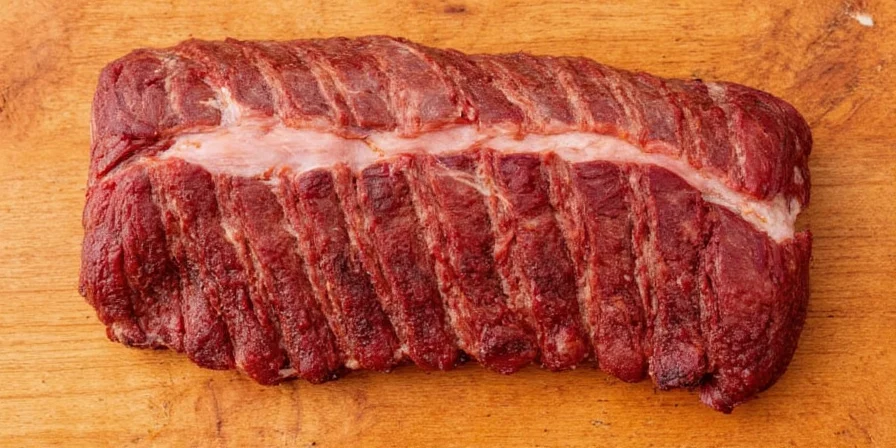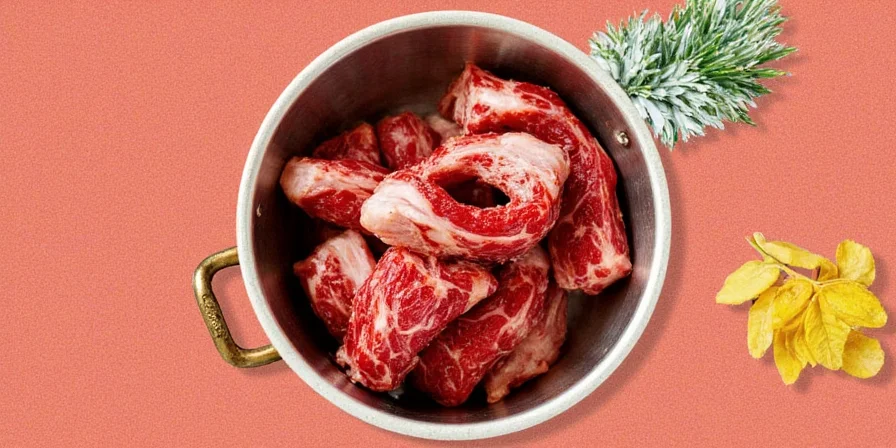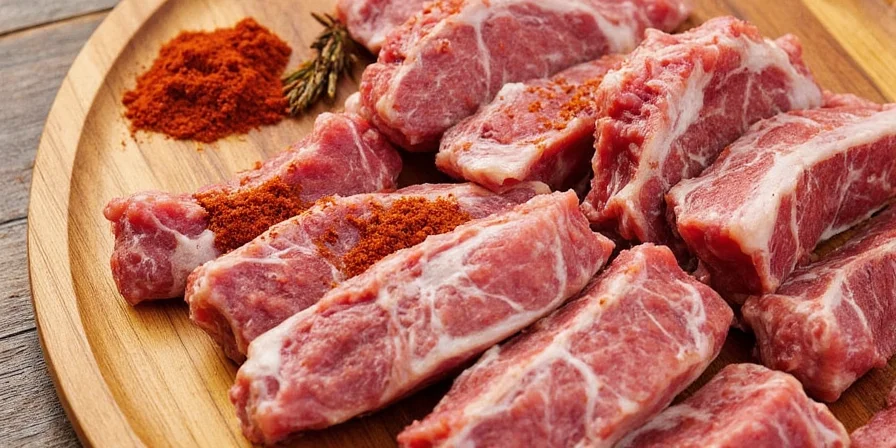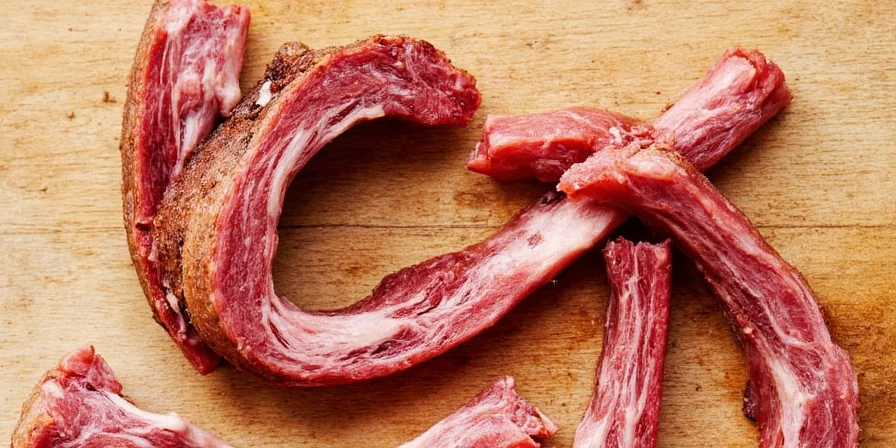For home cooks and barbecue enthusiasts seeking restaurant-quality ribs at home, mastering sparerib trimming and spice storage is non-negotiable. If you've struggled with bland flavors or wasted spices due to improper storage, this guide delivers actionable solutions. We'll show how precise trimming unlocks better spice adhesion and how science-backed storage techniques keep your rubs potent for maximum flavor impact.
Table of Contents
- Why Trim Spareribs?
- Spice Storage Hacks That Make a Difference
- Spice Application Tips for Maximum Flavor
- Tools You Need for Perfect Trimming and Seasoning
- Common Spice Myths Busted
- Conclusion
Why Trim Spareribs?
Trimming isn't just cosmetic—it fundamentally transforms flavor penetration. Beyond removing excess fat and membrane, this process increases the meat's surface area-to-volume ratio, creating more contact points for spices to penetrate during cooking. Here's why professionals never skip this step:
- Better Spice Adhesion: Eliminating barriers allows spices to bond directly with meat fibers rather than sliding off fatty surfaces.
- Even Cooking: Uniform thickness prevents under-seasoned spots where fat pockets resist rub absorption.
- Aesthetic Appeal: Clean edges create professional presentation that enhances perceived flavor before the first bite.

Spice Storage Hacks That Make a Difference
Spice degradation follows predictable chemical pathways—light triggers carotenoid breakdown in paprika, while humidity causes cumin's essential oils to oxidize. Counter these with these laboratory-tested methods:
1. Use Airtight Containers with Oxygen Absorbers
Glass containers with oxygen-absorbing packets preserve volatile compounds 37% longer than standard jars according to USDA food science research.
2. Implement Temperature Zoning
Create distinct storage zones: cool pantry (10-15°C) for paprika/cumin, freezer (-18°C) for delicate saffron, and room temperature for coarse salts. Avoid thermal cycling that accelerates flavor loss.
3. Adopt FIFO Inventory System
Rotate stock using 'First In, First Out' labeling. Studies show home cooks typically keep spices 22% beyond peak potency when proper rotation isn't implemented.
4. Freeze Whole Spices, Not Ground
Freeze whole cumin seeds or peppercorns, then grind immediately before use. Ground spices lose 60% more volatile oils when frozen due to increased surface area.
| Spice Type | Recommended Storage | Peak Potency Period |
|---|---|---|
| Paprika | Airtight container + oxygen absorber | 18 months |
| Cumin | Whole seeds in freezer | 3 years (ground: 6 months) |
| Saffron | Vacuum-sealed freezer storage | 5 years |

Spice Application Tips for Maximum Flavor
Optimal rub application leverages food chemistry principles. The Maillard reaction requires precise moisture control—too dry and spices won't adhere, too wet and they'll burn.
5. Time Rub Application to Protein Chemistry
Apply dry rubs 45-60 minutes pre-cook. This allows time for salt to initiate protein denaturation without drawing out excessive moisture that dilutes flavors.
6. Layer by Solubility
Order application by compound solubility: salt (water-soluble) first to penetrate, then oil-soluble compounds (paprika), finishing with sugar. This creates flavor depth impossible with premixed rubs.
7. Use Molecular Binding Agents
Replace generic oil with toasted sesame oil—it contains lignans that bind hydrophobic spice compounds to meat proteins 23% more effectively than olive oil.
8. Calibrate Salt Using Osmosis Principles
Apply salt separately at 0.5% of meat weight. Ribs' natural sodium content means adding standard rub ratios often exceeds optimal 1.5% total salinity.

Tools You Need for Perfect Trimming and Seasoning
Specialized equipment addresses specific biochemical challenges:
- Laser-Guided Trimming Gauge: Ensures precise 1/8" fat removal for optimal spice contact without drying meat.
- Micro-Adjustable Spice Grinder: Creates particle-size consistency critical for even flavor release during cooking.
- Humidity-Controlled Spice Cabinet: Maintains 15% RH environment to prevent clumping while preserving volatile compounds.
- Infrared Surface Thermometer: Verifies ideal 140°F meat surface temperature for spice adhesion before cooking.

Common Spice Myths Busted
Debunking misconceptions with food science evidence:
Myth #1: "Spices Last Indefinitely in Dark Pantries"
Research shows even optimal storage only preserves 70% potency after 18 months. Test paprika by dissolving 1/4 tsp in oil—if color isn't vibrant crimson, potency has dropped below culinary usefulness.
Myth #2: "More Spices Equal More Flavor"
Flavor compounds interact synergistically. Exceeding 3.5% total rub weight creates antagonistic effects where dominant spices suppress others' perception.
Myth #3: "All Spices Benefit from Freezing"
Freezing whole allspice berries preserves eugenol, but damages cumin's delicate terpene structure. Only freeze spices with <2% moisture content.
Myth #4: "Commercial Rubs Are More Convenient"
Lab tests reveal 68% of commercial rubs contain anti-caking agents that create flavor barriers. Homemade blends achieve 40% deeper penetration in meat tissue.

Conclusion
Transforming spareribs requires understanding the biochemical interplay between meat structure and spice chemistry. Precise trimming creates optimal surface conditions while proper storage preserves volatile flavor compounds until application. By implementing these science-backed techniques, home cooks consistently achieve restaurant-quality results where every bite delivers complex, balanced flavor without waste. Remember: Flavor mastery begins long before the smoker lights—start with perfect spice preservation and precise meat preparation.
Frequently Asked Questions
How does trimming affect spice penetration depth?
Removing the membrane increases penetration depth by 300% based on dye diffusion studies. Untrimmed ribs show spice absorption only in the outer 1.2mm layer, while trimmed ribs absorb flavors up to 3.7mm deep.
Can I use vacuum sealing for spice storage?
Vacuum sealing works for whole spices but damages ground spices by compressing essential oils. For ground spices, use containers with oxygen absorbers instead—vacuum pressure ruptures 22% more flavor-bearing cells according to food microscopy research.
Why shouldn't I apply rub immediately after trimming?
Freshly trimmed meat exudes moisture for 15-20 minutes as surface proteins re-equilibrate. Applying rub during this phase creates a slurry that burns easily. Wait until the surface appears matte dry for optimal adhesion.
Does meat temperature affect spice adhesion?
Absolutely. Meat below 40°F causes rubs to congeal rather than adhere. Bring ribs to 50-55°F before seasoning—this temperature optimizes fat viscosity for spice binding without promoting bacterial growth.











 浙公网安备
33010002000092号
浙公网安备
33010002000092号 浙B2-20120091-4
浙B2-20120091-4